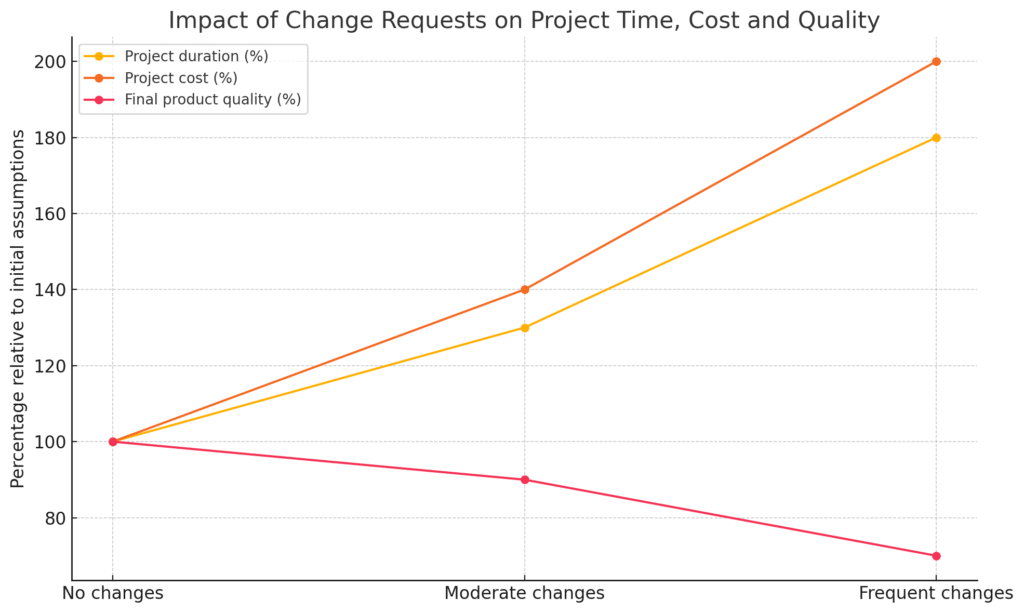A large number of changes and corrections in the requirements regarding the project scope have a huge impact on the project delivery date. Extending the deadline is just one of the negative effects of modifications. Sometimes, additional requirements lead to a situation where the project is not delivered at all. This happens when a lot of requirements of the following types are added to the project: Ad-hoc, Urgent, Emergency, Out of scope.
The above factors often require immediate reaction and management, because they not only affect the project duration, but also distract the project team and divert attention from the main goal of the project.

How to professionally refuse a client’s project changes to protect their success?
Do additional requirements affect the project? Definitely yes. Frequent changes in the project scope – especially those of the Ad-hoc, Urgent, Emergency or simply Out of scope type – can seriously delay its implementation, and in extreme cases block it completely. Their accumulation often causes the original goal to blur and the team to lose focus.
So how do you say no professionally, without damaging your relationship with your client?
1. Agree to change? Think about the consequences
Every “yes” you say to an additional requirement affects the time, cost and quality of the project. A wider scope means more work, which means higher costs and a longer lead time – which can ultimately reduce the quality of the final product. That’s why it’s crucial for stakeholders to understand the consequences of a decision to change.
2. Propose alternatives
Change is the only constant element of the project – but it can be tamed. When the client brings in new requirements:
- propose alternative solutions,
- present the pros and cons of each option,
- indicate the impact on the schedule, budget and scope.
The formula “NOT NOW” instead of “NO” builds the feeling that the client’s needs will be met, but in a timely manner.
3. Set priorities together with the client
When there are a lot of requests, it’s worth involving the stakeholder in setting priorities. By comparing them with the current plan, you can decide together:
- what stays in the project,
- what can be postponed,
- what to exclude.
This approach increases transparency and the client’s shared responsibility for the final effect.
4. Support decisions with data
Hard data is your ally. Show:
- how much the implementation time will be extended,
- what the cost of additional work will be,
- how quality may suffer.
Analysis of the impact of changes builds credibility and strengthens your position as an expert.
5. Ensure the definition of “Out of scope”
We too rarely formalize what is not in the scope of the project. Meanwhile, such assumptions facilitate:
- making decisions to reject or postpone requirements,
- planning changes in subsequent stages or sprints,
- pricing additional work.
Make sure that every change outside the scope is formally reported and priced – you will avoid misunderstandings.

The above graph shows how the increasing number of changes in a project affects:
- extending the implementation time (e.g. +80% with many changes),
- increasing costs (even twice),
- decreasing the quality of the final product.
Why is it worth being assertive in IT projects?
Assertiveness in IT projects does not mean closing yourself off to the client’s needs. On the contrary – it is the ability to manage expectations, protect business goals and support the team in maintaining pace and quality. A good analyst or project leader not only analyzes the impact of changes, but is able to talk about them in a substantive and empathetic way.
Summary
Changes are inevitable. But the way we react to them can decide the success or failure of the project. Refuse with respect, argue factually, show the consequences and build trust – and the client will appreciate it.
Filip Sadowski
LINE MANAGER, EDGE ONE SOLUTIONS
